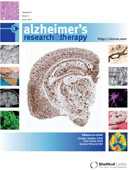阿尔兹海默症新药阻止脑部异常血块的形成
2014-07-01 佚名 不详
患阿尔兹海默症的小鼠通过RU-505的治疗对比没有治疗的患病小鼠,表现出炎症反应的降低和血液流速的升高,并且表现出更好的记忆力。在过去的10年对阿尔兹海默症的药物研究中,药物作用靶标都是淀粉样物质(amyloid),但这些药物不是疗效很差就是副作用太强。而最近研究的药物,通过作用血液中的结块物质,取得了令人兴奋的研究成果。 洛克菲勒大学的研究发现了一种化合物,可能通过作用于淀粉样物质β来阻止
患阿尔兹海默症的小鼠通过RU-505的治疗对比没有治疗的患病小鼠,表现出炎症反应的降低和血液流速的升高,并且表现出更好的记忆力。在过去的10年对阿尔兹海默症的药物研究中,药物作用靶标都是淀粉样物质(amyloid),但这些药物不是疗效很差就是副作用太强。而最近研究的药物,通过作用血液中的结块物质,取得了令人兴奋的研究成果。
洛克菲勒大学的研究发现了一种化合物,可能通过作用于淀粉样物质β来阻止阿尔兹海默症的发展。淀粉样物质β是一个通过自身片层化引起脑部血块形成的蛋白。它通过与纤维蛋白原相互作用,在血液中形成难以打开的凝块,最终引发炎症反应和神经细胞的窒息。而RU-505通过结合淀粉样物质β阻止异常血块的形成,而不会干扰正常的凝血,并且RU-505可以通过血脑屏障。但是RU-505在小鼠实验中产生了一些毒性,即使用量很低,仍会引发注射部位的炎症反应,因此仍然需要进一步的研究来解决这一问题。(生物谷 Bioon.com)
详细英文报道:
Without a steady supply of blood, neurons can't work. That's why one of the culprits behind Alzheimer's disease is believed to be the persistent blood clots that often form in the brains of Alzheimer's patients, contributing to the condition's hallmark memory loss, confusion and cognitive decline.
New experiments in Sidney Strickland's Laboratory of Neurobiology and Genetics at Rockefeller University have identified a compound that might halt the progression of Alzheimer's by interfering with the role amyloid-β, a small protein that forms plaques in Alzheimer's brains, plays in the formation of blood clots. This work is highlighted in the July issue of Nature Reviews Drug Discovery.
For more than a decade, potential Alzheimer's drugs have targeted amyloid-β, but, in clinical trials, they have either failed to slow the progression of the disease or caused serious side effects. However, by targeting the protein's ability to bind to a clotting agent in blood, the work in the Strickland lab offers a promising new strategy, according to the highlight, which will be published in print on July 1.
This latest study builds on previous work in Strickland's lab showing amyloid-β can interact with fibrinogen, the clotting agent, to form difficult-to-break-down clots that alter blood flow, cause inflammation and choke neurons.
"Our experiments in test tubes and in mouse models of Alzheimer's showed the compound, known as RU-505, helped restore normal clotting and cerebral blood flow. But the big pay-off came with behavioral tests in which the Alzheimer's mice treated with RU-505 exhibited better memories than their untreated counterparts," Strickland says. "These results suggest we have found a new strategy with which to treat Alzheimer's disease."
RU-505 emerged from a pack of 93,716 candidates selected from libraries of compounds, the researchers write in the June issue of the Journal of Experimental Medicine. Hyung Jin Ahn, a research associate in the lab, examined these candidates with a specific goal in mind: Find one that interferes with the interaction between fibrinogen and amyloid-β. In a series of tests that began with a massive, automated screening effort at Rockefeller's High Throughput Resource Center, Ahn and colleagues winnowed the 93,000 contenders to five. Then, test tube experiments whittled the list down to one contender: RU-505, a small, synthetic compound. Because RU-505 binds to amyloid-β and only prevents abnormal blood clot formation, it does not interfere with normal clotting. It is also capable of passing through the blood-brain barrier.
"We tested RU-505 in mouse models of Alzheimer's disease that over-express amyloid- β and have a relatively early onset of disease. Because Alzheimer's disease is a long-term, progressive disease, these treatments lasted for three months," Ahn says. "Afterward, we found evidence of improvement both at the cellular and the behavioral levels."
The brains of the treated mice had less of the chronic and harmful inflammation associated with the disease, and blood flow in their brains was closer to normal than that of untreated Alzheimer's mice. The RU-505-treated mice also did better when placed in a maze. Mice naturally want to escape the maze, and are trained to recognize visual cues to find the exit quickly. Even after training, Alzheimer's mice have difficulty in exiting the maze. After these mice were treated with RU-505, they performed much better.
"While the behavior and the brains of the Alzheimer's mice did not fully recover, the three-month treatment with RU-505 prevents much of the decline associated with the disease," Strickland says.
The researchers have begun the next steps toward developing a human treatment. Refinements to the compound are being supported by the Robertson Therapeutic Development Fund and the Tri-Institutional Therapeutic Discovery Institute. As part of a goal to help bridge critical gaps in drug discovery, these initiatives support the early stages of drug development, as is being done with RU-505.
"At very high doses, RU-505 is toxic to mice and even at lower doses it caused some inflammation at the injection site, so we are hoping to find ways to reduce this toxicity, while also increasing RU-505's efficacy so smaller doses can accomplish similar results," Ahn says.
本网站所有内容来源注明为“梅斯医学”或“MedSci原创”的文字、图片和音视频资料,版权均属于梅斯医学所有。非经授权,任何媒体、网站或个人不得转载,授权转载时须注明来源为“梅斯医学”。其它来源的文章系转载文章,或“梅斯号”自媒体发布的文章,仅系出于传递更多信息之目的,本站仅负责审核内容合规,其内容不代表本站立场,本站不负责内容的准确性和版权。如果存在侵权、或不希望被转载的媒体或个人可与我们联系,我们将立即进行删除处理。
在此留言










#阿尔兹海默#
53